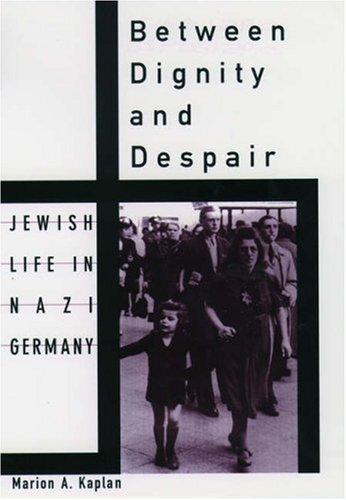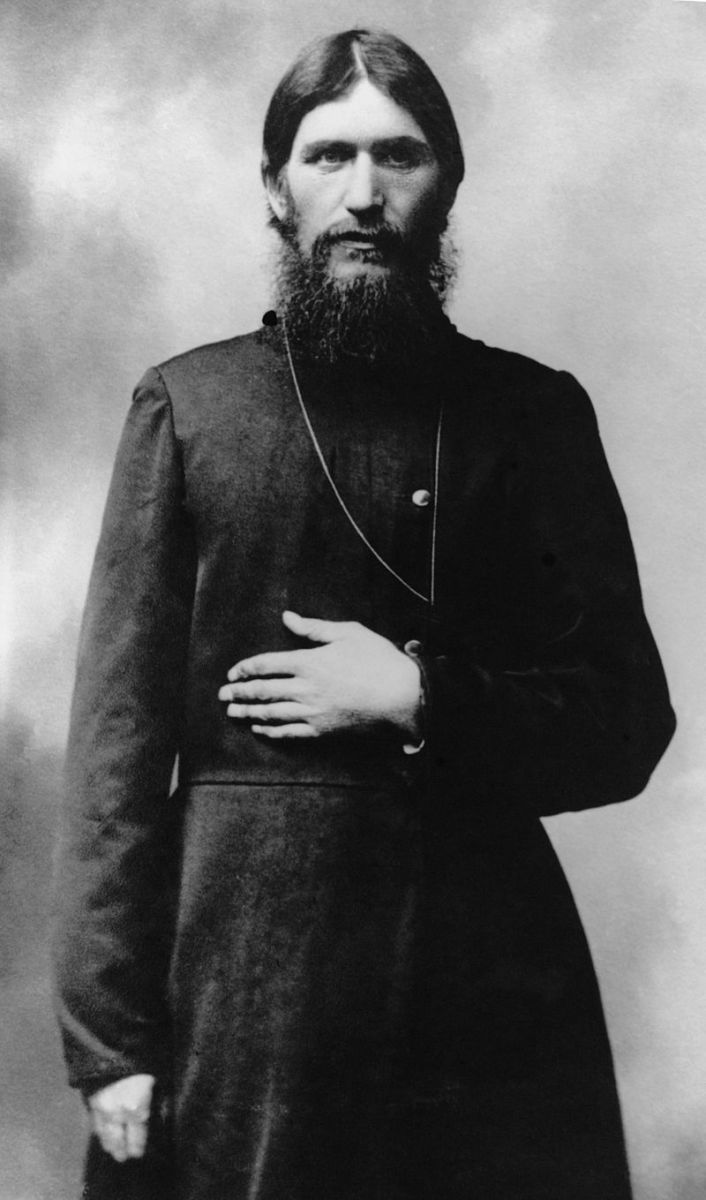The Holocaust: Death of a Soul
Although the events of the Jewish Holocaust and the effects of it thereafter are for the most part undisputable, there are two authors that give us a fresh take on the events. We first look at Marion Kaplan’s thoughts in her novel, “Between Dignity and Despair.” This text is presented in a very different fashion than most works about the Nazi Holocaust. Kaplan takes us into the minds of the naïve Jews within Germany that had to personally face the persecutions and hardships that this tragedy presented. Kaplan extracts pieces from actual interviews, diaries, and letters that she has collected throughout her research. The second text is that of Tadeusz Borowski and is titled, “This Way for the Gas, Ladies and Gentlemen.” Borowski presents his novel much like Kaplan in that the information that this book houses is pulled from true stories and accounts. The element that makes this text intriguing is that Borowski is actually a Holocaust victim and survivor. He relates his own personal knowledge of the subject onto the page. Borowski published this work out of Poland about fourteen years after the closing of the war. Even though Kaplan did not put her research into print until 1998, the stories and accounts of what happened at the concentration camps are just as detailed and vivid as if they were being recounted back in 1945. I hope that as I draw findings from both of these texts that I can bring a clearer light to what happened so long or not so long ago. Jean-François Lyotard stated, “Suppose that an earthquake destroys not only lives, buildings, and objects but also the instruments used to measure earthquakes.” I would like to present this quote as a question of what were the effects that the Jewish Holocaust had on Nazi Germany. Also, how did this affect the Jewish nation as a whole? The larger question will remain; what happened and what can we learn from it?
Although the aim of this article is to help individuals understand the way that Nazi Germany destroyed life, it leads us to wonder how such a human tragedy could occur in the first place. What happens in a government that leads to two out of three people of a certain group to be put to death? This brings up the debate of Intentionalists versus Functionalists or in layman’s terms, did Hitler plan to exterminate the Jews after he wrote “Mein Kampf” or as the war carried on and Jews had nowhere to go was genocide the only option which is also known as the “final solution?”
One aspect that led to the destruction of Jewish society was the act of ostracizing. If we look to the article, “The Nature of Prejudice,” by Gordon W. Allport, we see five degrees of negative action that consequently result in the extermination of a people group. The ladder starts at that of antilocution and moves through avoidance, discrimination, physical attack and then extermination. Both Kaplan and Borowski start their works at different points on the ladder. Kaplan starts somewhere between discrimination and physical attack. She begins in 1933 when Jews are starting to be publically shunned and economically crippled. At this point, only some Jews are suffering physical injuries, but all are facing public discrimination and defamation of their character. Just within that very first paragraph the chilling words are spoken, “It took less than two years to destroy the foundations upon which Jewish life had existed in Germany since the country’s unification in 1871.” At this time, as the event of extermination creeped towards Jewish citizens the only ones that see the severity are those involved in the government. The rest of the Jewish population is blinded by the shields that the Nazi’s figuratively or in some cases not so figuratively put upon their eyes. If we look into the opening of Borowski’s text, we see his storyline well on in to the stage of physical attack. The prisoners are being delivered at the extermination camps and are stripped of their worldly possessions; which includes dignity and not only a delousing apparently. The opening speaks briefly on the fifth step of the ladder, but focuses mostly on the physical traverses that these people must undergo. These two starting examples and recounts are only a brief illustration of how souls were destroyed during this time. As I look back to that quote by Lyotard, I wonder how the destruction of a soul can be measured. To physically break a being or to strip away possessions are one type of surface level evil, but what depths do the German Nazi’s reach to destroy the soul of an innocent individual? They sought to break Jewish nationalism and loyalty out of this people group; with some they would succeed, but all too many of them would go down swinging and never forsake the Jewish name and title much to the Nazi’s displeasure.

One of the starting points that began the destruction of Jewish life was the condition of living that the Jews had to endure during the government led boycotts. Kaplan speaks on this topic more than Borowski does. Borowski focuses more on stories that occurred within the concentration camps. Kaplan talks about how the Nazi Germany government encourages clients and consumers of Jewish businesses to stop using the Jewish services. The point is made that this enforcement or “encouragement” strikes fear in the hearts of not only Jewish citizens but also non-Jewish. I find that fascinating that as we study the Jewish Holocaust we quickly skim over how it affected the country as a whole and we just focus in on the greatest affected group. In reality, there were non-Jews that lived in immense fear probably wondering if they were the government’s next victim. There were also “mixed” marriages that existed between Hitler’s prized Aryans and the Jews. Kaplan speaks about how the government would force divorce between these people. For the Aryans that resisted these orders, they were treated just as if they had become a Jew themselves. Others attempted to pretend to be part of the Nazi SS, but as soon as their wives Jewish identity was found out they did not see a pleasant end. The torture of the work camps were just a means to an end of a long torturous journey that the Jews began facing long before getting on those trains. These boycotts are just one example of how this large scale event destroyed life. As I mentioned earlier, the Nazi’s are not just into the killing of people but they were into the killing of souls. I think that after reading texts such as Borowski and Kaplan we can see where Intentionalists draw their ideas from. If they were just trying to get rid of an overflow people then I feel like the Nazi’s would have put them all to death as soon as they got to the camps. However, they worked them to death and publically humiliated and discriminated against them. To me, this proves that they wanted to kill souls long before the body was ever dead. While all of this is happening publically, there are a lot of issues that this causes behind closed doors. All of the strain, stress, and problems that closing businesses and blackmailed men are facing, causes a need for women to step up as leaders within their household. For some, this is too harsh of a change and causes many families to split. Many women see what is coming at this point and want to escape from Germany as soon as they can. Many men are blinded and do not have any intention of leaving their home country and refuse to listen to their wives advice. This unfortunately causes many divorces within the Jewish world at this time. This is one way that Nazi Germany was killing the souls of its inhabitants.
We see this same concept later on in the Jewish Holocaust as families are being separated as they arrive at the concentration camps. Husbands, wives, and children are being sent in different directions from the moment that they arrive at the work camps. The Nazis slowly are taking away all the worldly things that matter to them. They start with possessions, businesses, and homes; they then move into a harsher realm where actual loved ones are being taken away. The twisted part of this story is that after these people are taken away from each other; the ones that survive must deal with the bodies of those that have already been sent to their death. This type of torture would drive anybody mad. Borowski states the gruesome recount in his text which reads, “I go back inside the train; I carry out dead infants; I unload luggage. I touch corpses, but I cannot overcome the mounting, uncontrollable terror. I try to escape from the corpses, but they are everywhere: I lined up on the gravel, on the cement edge of the ramp, inside the cattle cars. Babies, hideous naked women, men twisted by convulsions. I run off as far as I can go, but immediately a whip slashes across my back.” How does an individual mentally recover from such a traumatic experience? His soul is forever scarred if not completely destroyed. For the individuals that are able survive until the end of the war, these experiences never quite leave their minds. This is the effect that the Holocaust has had in this realm of thinking. The souls that the Nazi’s attempted to destroy are still haunted by those events long after their actual occurrence.
In Borowski’s text a story is recounted that makes the mind wonder how the workings of a concentration camp could have been possible been instituted by a human being. A young man speaks of building a soccer field and planting flowers at the camp. Just the beginning of this story can make one believe that individuals lived with some hope of survival at these camps. However, as the story progresses the young man tells us that one day he saw a train arrive full of new inhabitants and he looked away for just a few moments as he kicked around the soccer ball. In those few moments thousands of Jews were shuffled into the crematoria and completely destroyed. In some aspects, the individuals who were killed upon immediate arrival had the better end of the stick. This young man was just left to mourn over the loss of his peoples and live constantly in fear of being the Nazi’s next victim. In his own words he states, “I no longer controlled my body, although I could feel its every tremor. My mind was completely calm, only the body seemed to revolt.” This is a prime case of a slowly deadening soul.
By the time that the Jews arrived at their various concentration camps, their soul had long been destroyed. Some individuals that arrived were in worse shape than others. Although the people did not know where they were being sent to, I am sure that as awful of a reality that the camps were that in their very last seconds of life some were relieved that it was over. The oppression was over. The Nazi’s had long before broken their soul and it was just their bodies that were being destroyed at these camps. There will always be individuals that can overcome situations better than others and it is remarkable to see the strength that some kept about themselves. For the ones that escaped, survived, or were just full of hope to their end, they kept the heart of Judaism alive even well on into today. The Nazi’s broke their souls and bodies but they could never completely break the Jewish faith.
A question that I posed earlier in this text was, “what can we learn from it?” I believe that we can learn about the intentions and results of our own actions. We can look back to Allport’s steps of discrimination and come to understand the results of attitudes that we hold against one another. We might think that having a negative attitude towards a person or a people group is completely harmless. In reality, bad situations always escalate no matter how hard we try to restrain them. Adolf Hitler himself grew up with just a general distaste for the Jewish people. He then wrote “Mein Kampf,” and his hate escalated. As he rose to power and there were other people that were willing to act on all of his notions the Nazi Germany oppression on Jew’s began. What will your negative attitudes lead to if they continue? Hitler did not kill all of the Jews by his own hand it was done by the hands of his followers; what will your views cause others to do?
There is no way to wrap your whole mind around the events that happened during this Holocaust. We can read the stories that still exist for us in works such as Borowski and Kaplan provide for us. The grand scale of the destruction of the Jews and Jewish life are unfathomable and really can best be described as a disaster that destroyed everything including the instruments to measure them. There was no precedent set for this event that could help us understand it, but I hope that it can be the new instrument used to measure other events in attempt to nip these tragedies in the bud.









